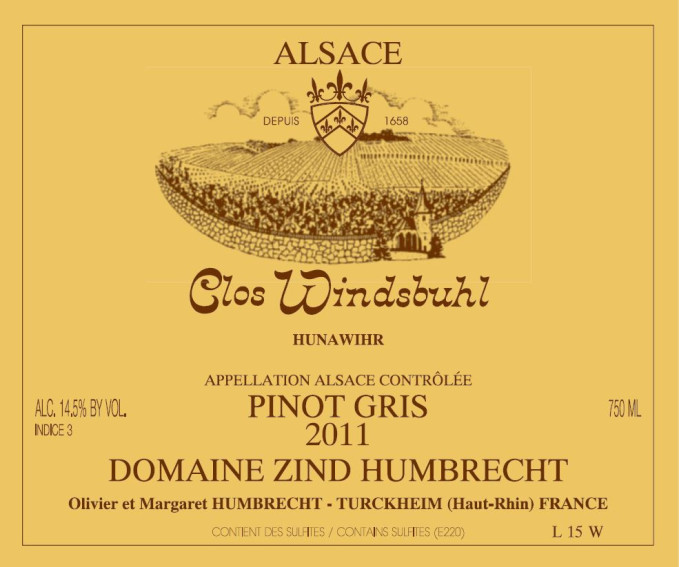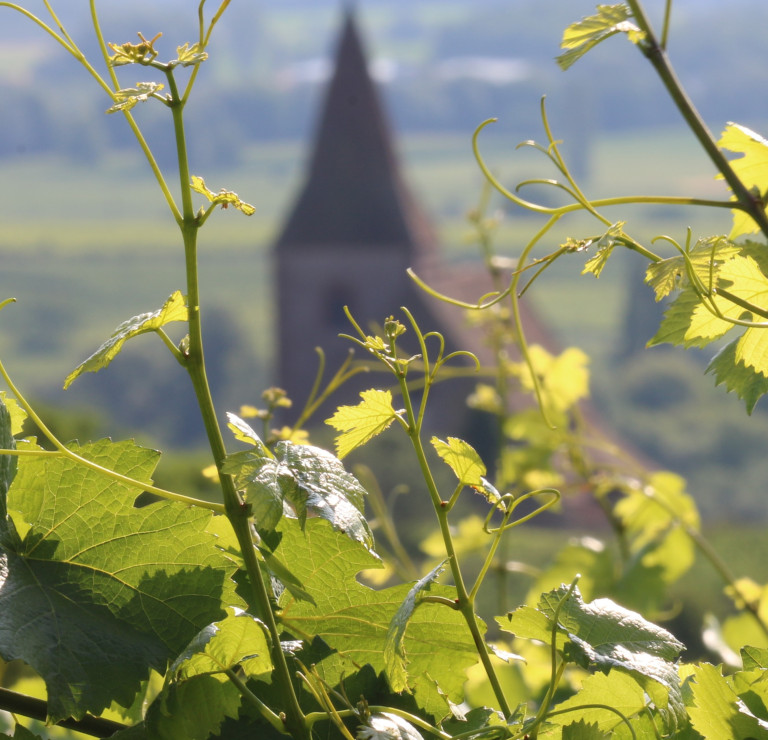
Technical presentation
| Bottling : | September 2012 |
|---|---|
| Acquired alcohol : | 14.5° |
| Residual sugar : | 28.0 g/l |
| Total acidity : | 4.3 g/l H2SO4 (6.6 g/l Acide Tartrique) |
| pH : | 3.5 |
| Yield : | 34 hl/ha |
| Optimum tasting : | 2015-2036 |
| Average age of vines : | 42 years |
| Terroir : | Clos Windsbuhl |
| Sweetness index : | 3 |
| Soil : | Muschelkalk calcareous, South/South East facing |
Description of the wine Pinot Gris Clos Windsbuhl 2011
The late ripening limestone soil of the Clos Windsbuhl is often favorable to the development of noble rot. However, in a solar and warm year like 2011 that would probably see the acidity fall down quickly, we preferred not to harvest the Pinot-Gris too late. All the younger vines of this grape were already harvested earlier and added to our varietal Pinot Gris (lot 151). Only the oldest vines on the Clos were used to produce this wine, harvested end of September with little noble rot. This vineyard has the capacity to give a solid structure to the wine because of the smaller yields and nice minerality, even in a more generous vintage like 2011.

Tasting notes
02/2013 : One can find all the subtlety and delicacy of the Windsbuhl in this refined fruity and mineral nose (wet stones, iodine). The high ripeness of the grapes is almost undetectable on the nose. The palate, however, shows a round structure well balanced by a ripe acidity that brings a sapid easy-to-drink style. There is a great resistance to oxidation that eventually brings more smoky and toasty aromas. The Windsbuhl limestone definitely brought a great harmony to this wine.

The Clos Windsbuhl of Hunawihr
The altitude of the vineyard coupled with Hunawihr’s tardy climate means that the Clos Windsbuhl is often one of the last of our vineyards to be harvested. This explains the aromatic quality of the Clos’ wines and the consistent balance of acidity, a guarantee of good ageing. Although often harvested late, the Windsbuhl grapes are only rarely botryitized, doubtless due to the altitude of the vineyard, but nevertheless often reach high levels of maturity.